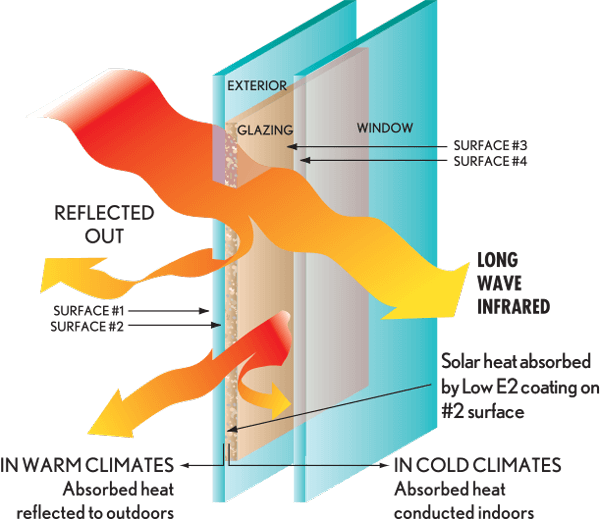
Windows of Efficiency: Revolutionizing Energy Consumption
Energy-efficient windows have become a cornerstone of sustainable architecture, reshaping how buildings utilize energy and contribute to environmental conservation. From advanced glazing technologies to thermal insulation, these windows play a pivotal role in creating energy-efficient and eco-friendly spaces.
The Role of Glazing Technologies:
At the heart of energy-efficient windows are innovative glazing technologies. Low-emissivity (Low-E) coatings, for instance, help control the amount of infrared and ultraviolet light that passes through the glass. This not only enhances occupant comfort but also prevents furniture and interior finishes from fading due to sun exposure.
Double and Triple Pane Solutions:
Double and triple pane windows are integral components of energy-efficient design. These windows feature multiple layers of glass with sealed spaces in between, providing enhanced insulation. The additional layers act as barriers, reducing heat transfer and maintaining a more consistent indoor temperature, ultimately reducing the reliance on heating and cooling systems.
Gas Fills for Insulation:
The spaces between panes in energy-efficient windows are often filled with insulating gases such as argon or krypton. These gases have higher insulating properties than air, further minimizing heat exchange between the interior and exterior. This additional insulation contributes to maintaining a comfortable indoor climate while optimizing energy usage.
Solar Heat Gain and Daylighting:
Energy-efficient windows strike a balance between optimizing natural daylight and minimizing solar heat gain. Strategic placement and design considerations allow these windows to harness sunlight for natural lighting, reducing the need for artificial lighting during the day. Simultaneously, features like spectrally selective coatings help control the amount of heat entering the building.
Frame Materials and Thermal Breaks:
Beyond the glass, the materials used for window frames play a crucial role in energy efficiency. Modern frames utilize materials such as fiberglass, vinyl, or wood-clad with thermal breaks to minimize heat conduction. These materials enhance the overall insulation properties of the window, contributing to a more energy-efficient building envelope.
Condensation Resistance:
Condensation on windows can be a significant issue, leading to mold growth and reduced visibility. Energy-efficient windows are designed with enhanced condensation resistance, reducing the likelihood of moisture buildup. This feature not only improves indoor air quality but also extends the lifespan of the windows.
Certifications and Ratings:
To guide consumers and professionals in making informed choices, energy-efficient windows often come with certifications and ratings. Look for labels such as ENERGY STAR in the United States or the European Union’s energy performance ratings. These certifications indicate that the windows meet specific standards for energy efficiency and environmental impact.
Financial Benefits of Energy Efficiency:
Investing in energy-efficient windows yields long-term financial benefits. Reduced energy consumption translates into lower utility bills, making the initial investment in high-quality windows a wise financial decision. Many regions also offer incentives, rebates, or tax credits for incorporating energy-efficient features in buildings.
Environmental Impact and Sustainability:
Energy-efficient windows align with the broader goal of sustainable and environmentally conscious construction. By optimizing energy usage, these windows contribute to lower carbon footprints and reduced reliance on non-renewable resources. Sustainable building practices, including energy-efficient design, play a vital role in mitigating the impact of buildings on the environment.
Energy-Efficient Windows at BusinessInc:
At BusinessInc, we prioritize sustainability in our office spaces. Our commitment to energy efficiency is reflected in the incorporation of cutting-edge windows that enhance natural light, reduce energy consumption, and contribute to a more eco-friendly workspace. Explore our sustainable initiatives on our website.
Looking to the Future: Sustainable Building Practices:
Energy-efficient windows exemplify the evolving landscape of sustainable building practices. As technology advances and awareness grows, the integration of such windows will likely become a standard in construction. The ongoing pursuit of energy efficiency not only benefits individual building occupants but also contributes to a collective effort to create a more sustainable and resilient built environment.
In conclusion, energy-efficient windows play a pivotal role in shaping the future of architecture and construction. These windows go beyond functionality, becoming integral components of sustainable design that prioritize energy conservation, occupant comfort, and environmental responsibility.

